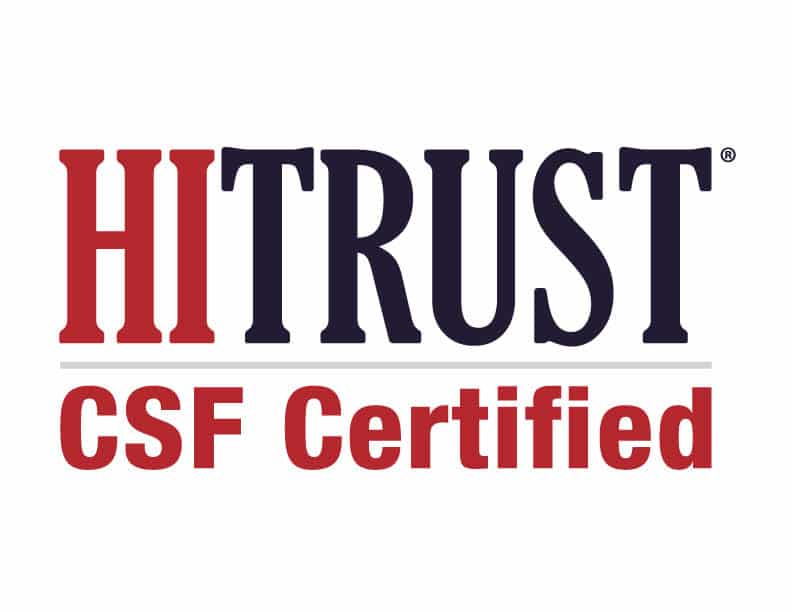
A HITRUST gap analysis evaluates an organization's security controls, policies, and procedures against the HITRUST CSF requirements.
What is HITRUST CSF?
The HITRUST CSF (Common Security Framework) is a comprehensive and widely adopted framework designed to address the security, privacy, and regulatory challenges faced by organizations in the healthcare industry. It provides a set of controls, standards, and best practices to help organizations manage and protect sensitive healthcare information effectively.
Related: What is HITRUST compliance?
Advantages of HITRUST certification
HITRUST certification signifies an organization's dedication to ensuring robust security and privacy measures. With this accomplishment, healthcare establishments increase their credibility and assure partners, stakeholders, and customers that they have adhered to strict security regulations. Additionally, it facilitates adherence to multiple regulatory frameworks, such as HIPAA and state and federal guidelines.
The value of HITRUST in the healthcare industry is especially vital amidst the current surge in cybercrime, particularly since the start of COVID-19. Research has shown that healthcare organizations are being targeted by ransomware attacks more frequently, as indicated by a global increase of 45% within this sector compared to only 22% across other sectors from November 2020 onwards, according to one study. Healthcare ecosystems find themselves increasingly exposed and vulnerable to hackers who seek individual data or demand payment for stolen information held hostage.
See also: HIPAA Compliant Email: The Definitive Guide
How to perform a gap analysis
Performing a HITRUST gap analysis involves several steps and considerations, particularly in the context of applying it within an organization:
- Scope definition: Determine the scope of the analysis, including the systems, processes, and entities within your organization that will be assessed against the HITRUST CSF. Identify the boundaries of what will be included in the assessment.
- Resource allocation: Allocate the necessary resources, including personnel, tools, and time, to conduct a thorough analysis. This may involve a team with expertise in HITRUST requirements, cybersecurity, compliance, and healthcare industry standards.
- HITRUST CSF familiarization: Ensure that the analysis team understands the HITRUST CSF requirements and the specific controls and criteria relevant to your organization's operations and services.
- Assessment process: Evaluate existing security controls, policies, procedures, and technical implementations within your organization against the HITRUST CSF requirements. This involves conducting interviews, document reviews, and possibly technical assessments.
- Gap identification: Compare the findings from the assessment against the HITRUST CSF requirements. Identify gaps, deficiencies, or areas where your organization's current practices do not meet the specified criteria.
- Documentation and reporting: Document the identified gaps and deficiencies comprehensively, along with recommendations for remediation. Present these findings in a structured report highlighting non-compliance areas and suggested remediation steps.
- Remediation planning: Develop a remediation plan that outlines specific actions, timelines, responsibilities, and resources required to address the identified gaps. Prioritize the remediation efforts based on risk and criticality.
- Remediation implementation: Execute the remediation plan by implementing the necessary changes, enhancements, or additions to your organization's security controls, policies, and procedures.
- Reassessment and validation: Conduct a reassessment after implementing the remediation steps to address the identified gaps. Validate the changes made and verify that your organization aligns more closely with HITRUST CSF requirements.
- Continuous improvement: Establish processes for ongoing monitoring, evaluation, and continuous improvement to maintain alignment with HITRUST CSF requirements. Regularly review and update security measures and practices as needed.
Related: SOC 2 certification or HITRUST?
FAQs
Who conducts a HITRUST gap analysis?
A HITRUST gap analysis is typically conducted by qualified HITRUST assessors or consultants who have expertise in information security, compliance, and the HITRUST CSF. These professionals are trained and certified to assess an organization's controls against the requirements of the HITRUST CSF and provide recommendations for achieving compliance.
How long does a HITRUST gap analysis take to complete?
The duration of a HITRUST gap analysis can vary depending on the size and complexity of the organization, as well as the scope of the assessment. It may take anywhere from a few weeks to several months to complete, depending on these factors.
How often should a HITRUST gap analysis be conducted?
The frequency of conducting a HITRUST gap analysis depends on various factors, including changes in the organization's business operations, IT infrastructure, regulatory requirements, and security landscape. In general, organizations may conduct a HITRUST gap analysis annually or as needed to ensure ongoing compliance with the HITRUST CSF and other relevant standards and regulations.
Subscribe to Paubox Weekly
Every Friday we'll bring you the most important news from Paubox. Our aim is to make you smarter, faster.



